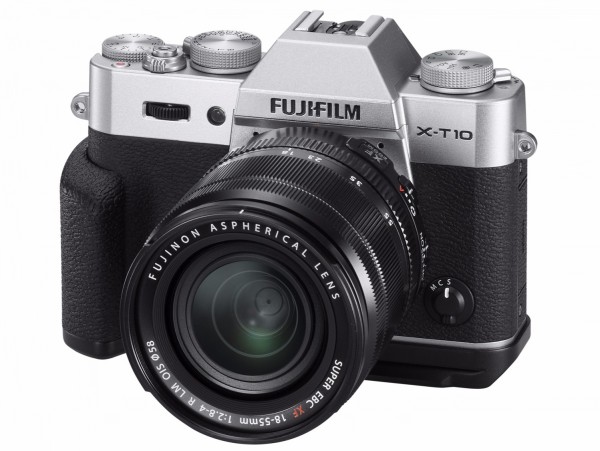
Fujifilm's line of cameras increasingly looks like choices among toothpastes. Do you want fluoride or gingivitis protection? Oh, this one whitens teeth, cures bad breath, and eliminates body odor. Decisions, decisions. That's kind of my reaction to today's debut of the X-T10 digital camera, which shouldn't be confused with Fujifilm's X10, X100T, or X-T1. Dyslectics and the visually impaired, beware!
As a X100T owner, I'm a Fuji fan. So, please, don't take my criticism wrongly. It's just this lineup is quite crowded. The company's product website lists -- count `em -- 18 different X-Series models. Sure, some aren't current and not all can be confused. But many of them are close enough in actual benefits to perplex potential buyers.
Which is Greater: 1 or 10?
The X-T10 appears to be the camera for someone wanting the X-T1, but not the upfront cost, benefit of interchangeable lenses, and smaller overall size. The Ten body lists for around $800 compared to $1,200 for the One. The two digital cameras share the same 16-megapixel sensors and most everything else that matters. They use the same lenses, and functionally are similar with respect to ISO and bracketing ranges, size and functionality of the back viewfinders, and more.
Differences that will matter to some buyers: X-T1 is weather-sealed, provides better electronic viewfinder, adds dedicated ISO dial, and, with the newest firmware, offers electronic, mechanical, and electronic+mechanical shutters -- among other subtleties.
I nearly bought the X-T1 last autumn, choosing the X100T instead. Had Fujifilm announced the firmware update enabling comparable shutter and other capabilities before my purchase, I might have chosen the interchangeable lens camera instead. Might. I have no regrets picking the smaller shooter with fixed, prime lens.
X-Series Benefits
The X100, released four years, revitalized Fujifilm's digital camera lineup, with focus on mirrorless designs that are more compact and resemble rangefinders from Leica. There's a camera for almost any budget or photographic style -- from the timidest amateur to most aggressive professional.
I will simplify the core lineup, briefly:
- X30 is for someone needing a smaller compact, using non-interchangeable lens with sufficient zoom range. Benefits include diminutive size, electronic viewfinder, and f/2-2.8 lens. Typical street price: $500.
- X-A2 is for someone looking for a smaller interchangeable lens compact with dSLR-size APS-C sensor. Benefits include flip-up screen, auto-macro mode, and point-and-shoot capabilities for newbies and finer controls as their skills advance. Typical street price: $550 with 16-50mm lens.
- X-M1 is for no one other than the budget conscious interchangeable lens camera shopper. The benefits are nearly identical to the newer X-A2. Typical street price: $400, body only.
- X100T is for someone wanting high image quality from a non-interchangeable mirrorless compact that is rangefinder retro-styled. Benefits include hybrid electronic-optical viewfinder, nearly silent leaf shutter, and f/2 prime lens, Typical street price: $1,300.
- X-E2 is for some wanting a professional rangefinder-styled interchangeable lens camera that is affordably priced. Benefits look less appealing with release of the X-T10. Typical street price, body only: $700. (This model is technically outdated, and, as such, heavily discounted; it's a great value.)
- X-Pro1 is for someone wanting most of the X100 Series benefits, including electronic-optical viewfinder, but with interchangeable lenses. Typical street price, body only: $800. (This model is technically outdated, and, as such, heavily discounted; it's a great value.)
- X-T1 is for someone demanding a flexible, professional-grade interchanegeable lens mirrorless camera with advanced shutter capabilities and fine controls (which include dedicated ISO). Typical street price: $1,200, body only.
- X-T10 is for someone wanting most of the X-1's benefits for lower purchase price. Estimated sales price: $800, body only.
Yes, the list is simple, but the point is benefits over features.

